One spring, I traveled to Tibetan China. We traveled 8 hours overland from Sichuan, China, to parts of Tibet few foreigners have visited. The scenery was breathtaking, and making our quest even more interesting was knowing all about the different Tibetan dogs. Visitors to Tibet should understand the unique and fascinating Tibetan dog breeds.
The major Tibetan dog breeds are the 1) Tibetan Terrier, 2) Tibetan Spaniel, 3) Shih Tzu, 4) Lhasa Apso, 5) Tibetan Mastiff, and 6) Tibetan Kyi Apso. In Tibet, each dog breed had a different role and way they were used in Tibetan society. Some dogs were herding dogs, others were watchdogs, and some were companionship dogs. This has helped give each Tibetan dog a unique and exciting personality.
Table of Contents
Exploring Tibetan Canine Heritage: A Guide to Tibetan Dog Breeds
Introduction:
During a springtime journey to Tibet, an area seldom visited by outsiders, I embarked on an eight-hour overland trip from Sichuan, China, into the heart of Tibet. The landscape was stunning, but the diverse range of Tibetan dog breeds we encountered added an extra layer of intrigue to our adventure. Understanding these unique and fascinating breeds is a must for anyone visiting Tibet.
The principal Tibetan dog breeds include the Tibetan Terrier, Tibetan Spaniel, Shih Tzu, Lhasa Apso, Tibetan Mastiff, and Tibetan Kyi Apso. Each species in Tibet has its distinct role and significance within the society, varying from herding to guarding to providing companionship. This diversity in roles has cultivated unique and captivating personalities in each of the Tibetan dog breeds.
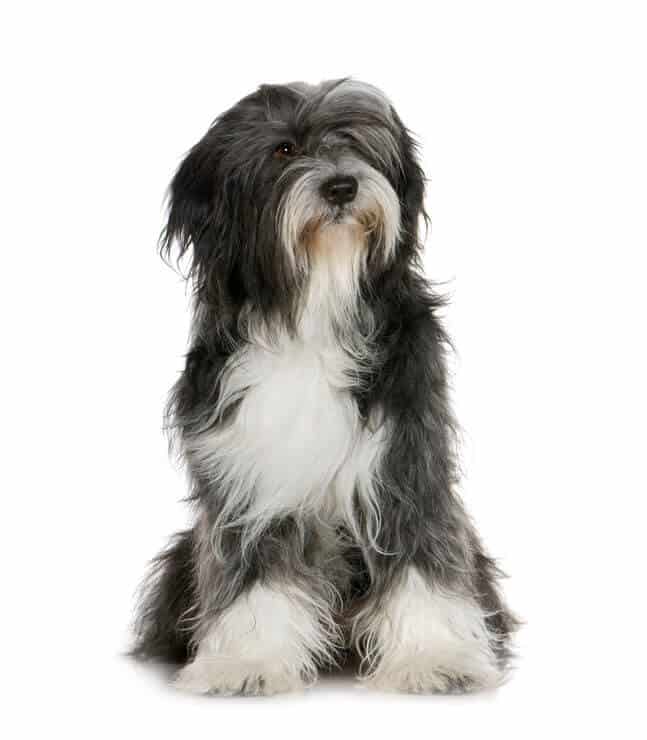
Tibetan Terrier
The Tibetan Terrier is a medium-sized dog breed that originated in Tibet. Despite the name terrier used in its name, it is not a terrier breed.
Tibetan Terriers originated from European travelers who traveled to Tibet and saw the dog. They felt the dog resembled what they knew as a terrier, so they called it a Tibetan Terrier.
The actual Tibetan name for the breed is Tsang Apso, which roughly translates to “shaggy, bearded (apso) or dog. Some other Western travelers called the dog Dokhi Apso, meaning a dog who lives mainly outdoors.
Like many Tibetan dogs, the Tibetan Terrier has a legend. Their owners kept the dogs as good luck charms, mascots, watchdogs, herding dogs, and companions. The herders also used Tibetan Terriers to retrieve any articles that may have been lost or fallen down the mountainside.
Tibetan legend says the Tibetan Terriers were kept purebred for over 2000 years. Tibetan Terriers were known as the “Holy Dogs of Tibet.” For many centuries, the Tibetan terriers were never sold but were only given as gifts by monks to help promote good fortune.
To discover more about Tibetan Terriers, you can read our blog, 18 Questions About the Tibetan Terrier Dog Bred Answered by clicking here.

Tibetian Spaniel
The Tibetan Spaniel is a small, assertive, intelligent dog that originated in Tibet. The Tibetan spaniel is a great companion dog.
Even though it has the name spaniel, it is not part of a spaniel breed. Like many other Tibetan dogs, the spaniel’s name was given to it by Western travelers to Tibet who may have felt the Tibetan Spaniel resembled other spaniels as a Cavalier King Charles Spaniel.
I have had many Tibetan spaniels. They are lovely dogs. They make great watchdogs and excellent companion dogs. They are a bit stubborn but also very intelligent.
Tibetan Spaniels are one of the most cat-like dog breeds. They will climb on everything. They prefer to be up and look out at what is going on. My Tibetan Spaniel loved to sit on the back of the sofa or chair.
Tibetan Spaniels are happy and highly affectionate, often greeting you by jumping on your lap or licking your face. They are a very social breed, so they need regular contact with humans. They do not like to be left alone for long periods. In Tibet, they were the companion dogs of the Tibetan monks.
Legend says that the Tibetan Spaniel dogs used to sleep in the beds with the monks to keep the monks’ beds warm. The Tibetan monks called them “little lions” because they looked like the Tibetan Spaniel dogs, reminding them of the Chinese foo dogs or guardian lions.
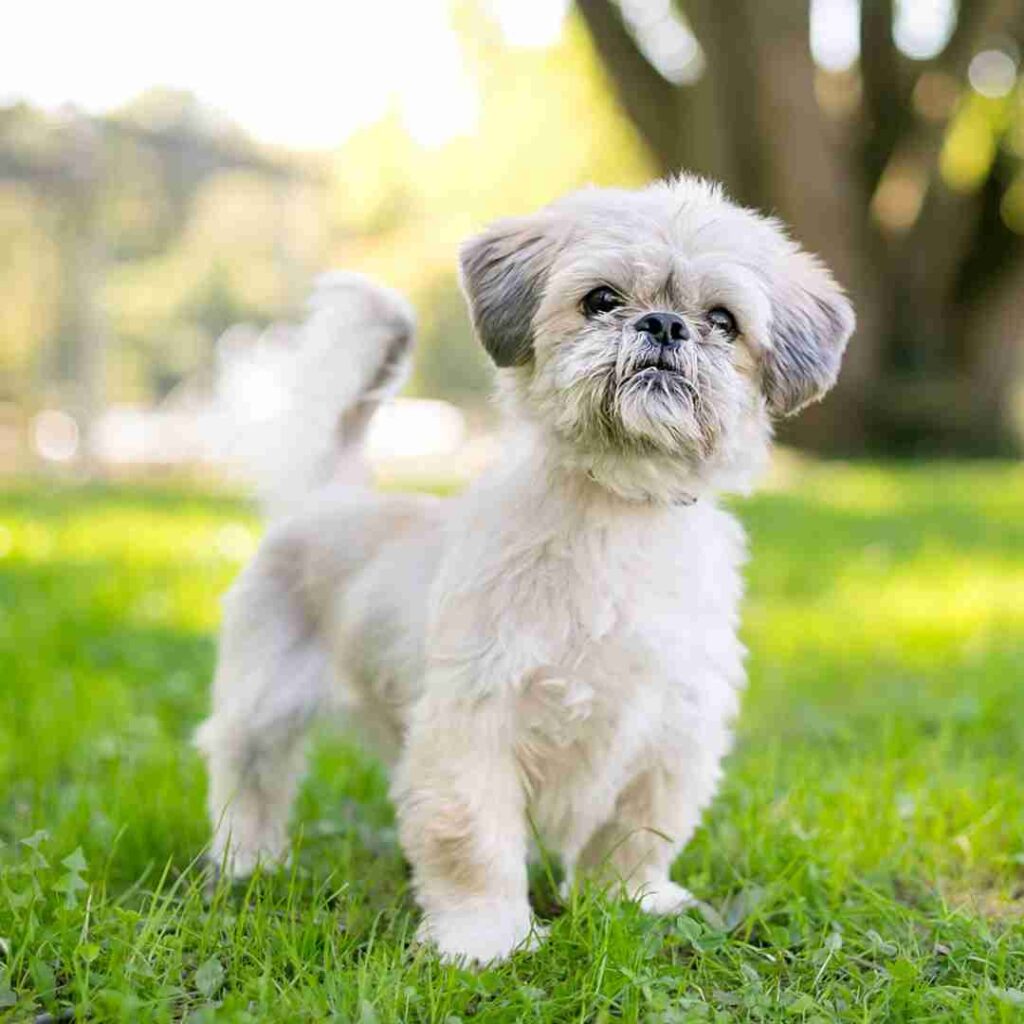
Shih Tzu
Many people think that the Shih Tzu dog originally came from Tibet. They have a soft and long double coat with very long hair, similar to many Tibetan breeds.
It is thought that the Shih Tzu is a cross between the Chinese Pekingese dog breed and the Tibetan Lhasa Apso dog. The Dalai Lama gave a Tibetan Lhasa Apso to the Chinese Emperor at the end of the 17th Century. This is why the Shih Tzu is also thought to be from the Tibetan family of dogs.
Owning a Shih Tzu in China was a great prize; they were the Chinese royal family’s favorite dog for many years. Like Tibet, China refused to sell, trade, or give away any Shih Tzu dogs, so these dogs did not come to the Western world until about 1930.
Shih Tzus are known to be outgoing and alert. They tend to be quite possessive around other dogs and socialize with them, and you must start at a very young age.
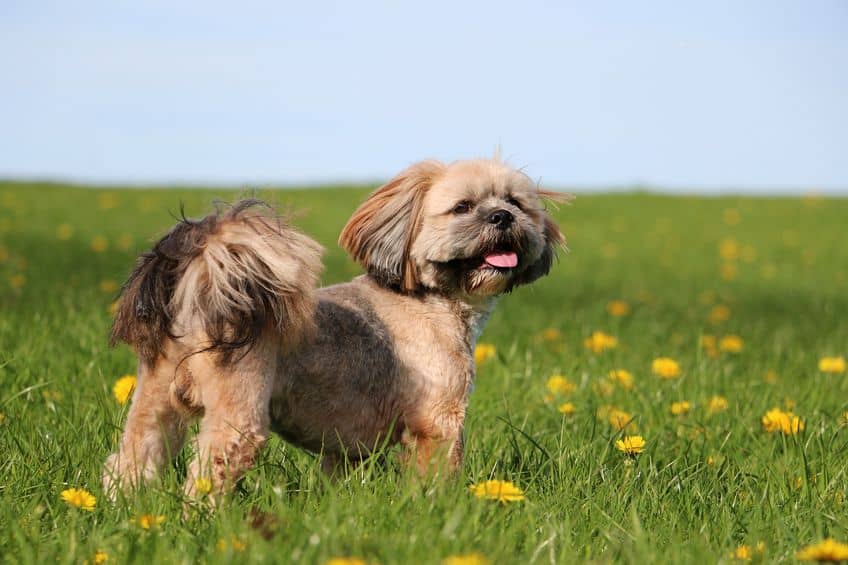
Lhasa Apso
Lhasa Apso is a non-sporting dog breed that originated from Tibet. The breed’s name comes from Lhasa, the capital of Tibet, and Apso, the Tibetan word that means “guard” or “guard dog.”
The Lhasa Apso was a dog in the interior courtyards of the Buddhist monasteries. The Lhasa Apso’s main purpose was to alert the Tibetan monks of any intruders who entered the monastery.
The Lhasa Apso is known to be very independent while at the same time very loyal to its owners. They are eager to please their owners.
They can live longer than other breeds, with some living well into their 20s. They are known to be quite a healthy and sturdy breed. They do require regular exercise.
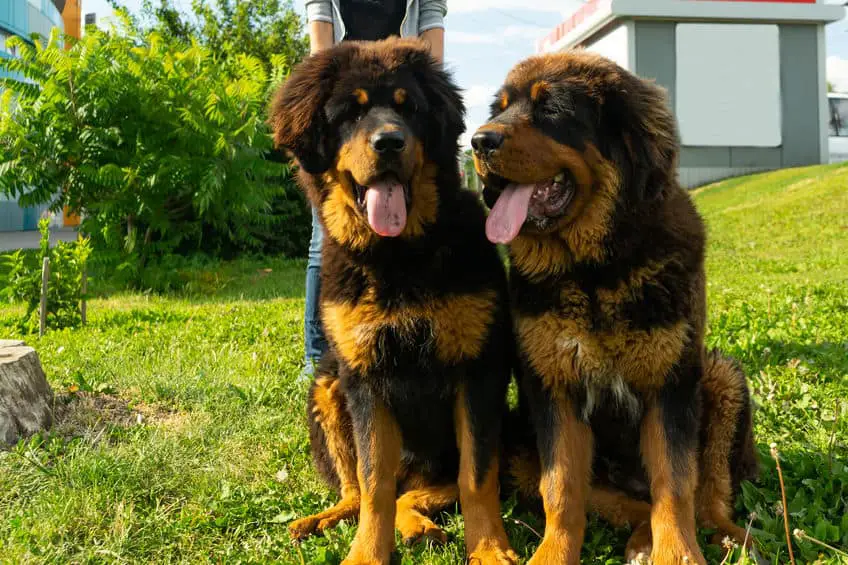
Tibetian Mastiff
The Tibetan Mastiff is a large Tibetan dog breed. It has a long double coat of fur that can be found in various colors.
The Tibetan Mastiff is a guard dog used as a nomad dog for thousands of years. Traditionally it was allowed to run loose at night.
The Tibetan Mastiff likes to be outdoors and to run free. They are suited for a house with a yard; usually, they are not well suited for apartment living.
Like other Tibetan breeds, they are intelligent and stubborn. They are known to be strong-willed, so you must start socializing with them early.
The Tibetan Mastiff is not a true mastiff. The word mastiff was given to the dog by the Europeans who first came to Tibet, saw the dog, and thought it was a mastiff. A more appropriate name for the Tibetan Mastiff would be the Tibetan mountain dog.
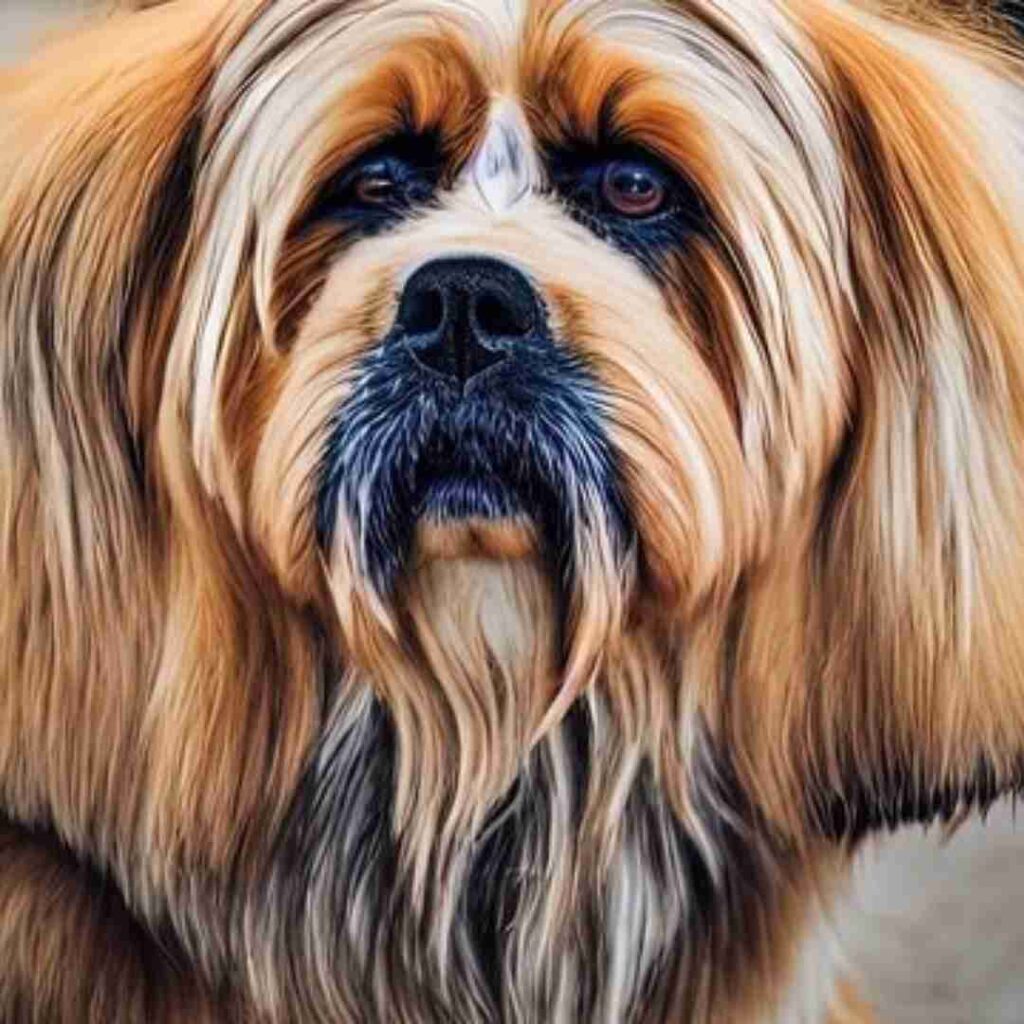
Tibetan Kyi Apso
It can be easy for many people to confuse the Tibetan Mastiff and the Tibetan Kyi Apso dog. But the Tibetan Kyi Apso has a lighter and shaggier appearance.
The Tibetan Kyi Apso also has a rolling, bouncy trot and a deep bark. It is considered independent, intelligent, alert, and energetic like other Tibetan dogs. He is considered to be a Tibetan livestock guard dog.
The Tibetan Kyi Apso can be stubborn and very territorial, which makes it a great watchdog. The Tibetan Kyi Apso is also wary of strangers and can become aggressive toward them. This is why working on socializing the Tibetan Kyi Apso dogs when they are young is essential.
This is one of the Tibetan dog breeds that is not yet recognized as a breed by any major kennel club.
Tibetan dogs are unique in many ways. Not only do all Tibetan dogs have a long and rich history, but they are all brilliant and excellent watchdogs. Tibetan dogs are loyal to their owners and make excellent companions and pets.
At A Bus On A Dusty Road, we discuss travel, life, and ex-pat living. We are all about “Living Life As A Global Citizen.” We explore social, cultural, and economic issues and travel.
We would love to have you be part of our community. Sign up for our newsletter to keep up-to-date by clicking here. If you have any questions, you can contact me, Anita, by clicking here.
Listen to our Podcast called Dusty Roads. You can find it on all major podcast platforms. Try out listening to one of our podcasts by clicking here.
Subscribe to our A Bus On A Dusty Road YouTube Channel filled with great videos and information by clicking here.
Related Questions
What Are the Round Basket Boats you see in Vietnam?
The round basket boats, or coracles as they are called, are handwoven boats along the central coast of Vietnam. The boat is woven from very young bamboo and then covered in tar or resin to waterproof it. It can take a skilled artisan several days to make one of these round basket boats. The boats were originally designed to avoid the tax the French placed on all boats. Today, these boats are still used by fishermen along the coast of Central Vietnam.
You can learn more by reading our blog What Are the Round Basket Boats you see in Vietnam? by clicking here.
What are some tips for Traveling using China’s high-speed train system?
China’s high-speed trains are a fantastic way to travel around China. However, high-speed train tickets may be difficult for foreigners without speaking and reading Chinese. Train security also has specific rules and regulations about what you can carry onboard. The train platform may work a bit differently than what foreigners are used to. To help you navigate China’s high-speed train system better, we have given you seven tips to help you on your journey.
To learn more you can read our blog 7 Tips to Travel by China’s High-Speed Train System by clicking here.

